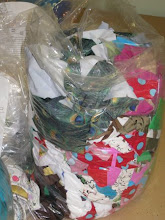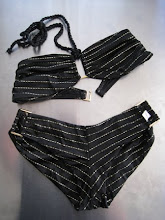 Sorona is an alternative to petrochemicals by using corn sugar instead. It requires 40% less energy to produce than an equal amount petroleum-based Nylon. Also, producing Sorona reduces CO2 emissions up to 60% over an equal amount of petroleum-based Nylon.
Sorona is an alternative to petrochemicals by using corn sugar instead. It requires 40% less energy to produce than an equal amount petroleum-based Nylon. Also, producing Sorona reduces CO2 emissions up to 60% over an equal amount of petroleum-based Nylon. Sorona fibers begin accepting dye pigments below the boiling point of water, full depth of color is achieved at the boiling point compared to PET which is well above. The stress/strain ratio is much less compared to Nylon and PET, where the applied strain/total recovery ratio and the percent elongation/load g/den is much higher than Nylon and PET.
All around it seems better, but what about the genetic manipulation of corn and the treatment of farmers? To learn more about that, see Rachel Silverberg's blog about corn at www.cornbloat.wordpress.com.






